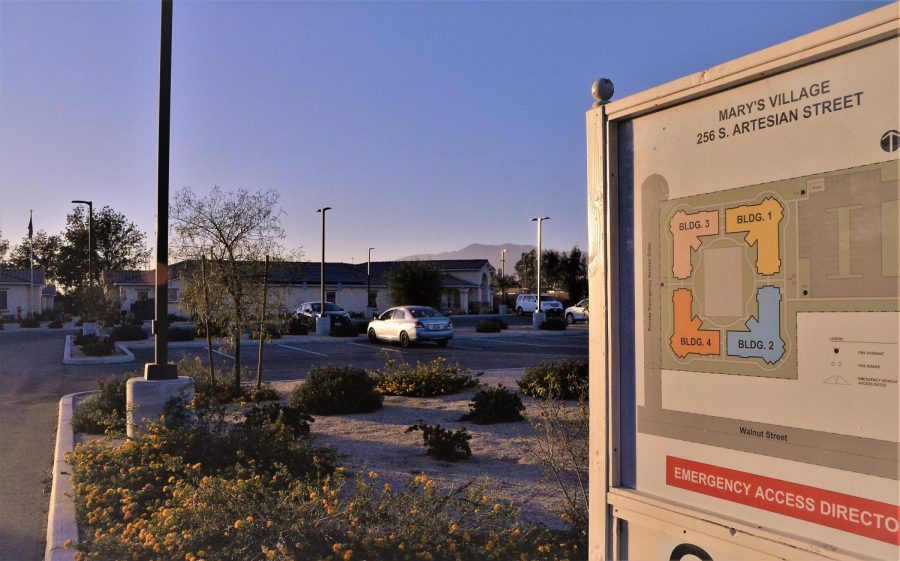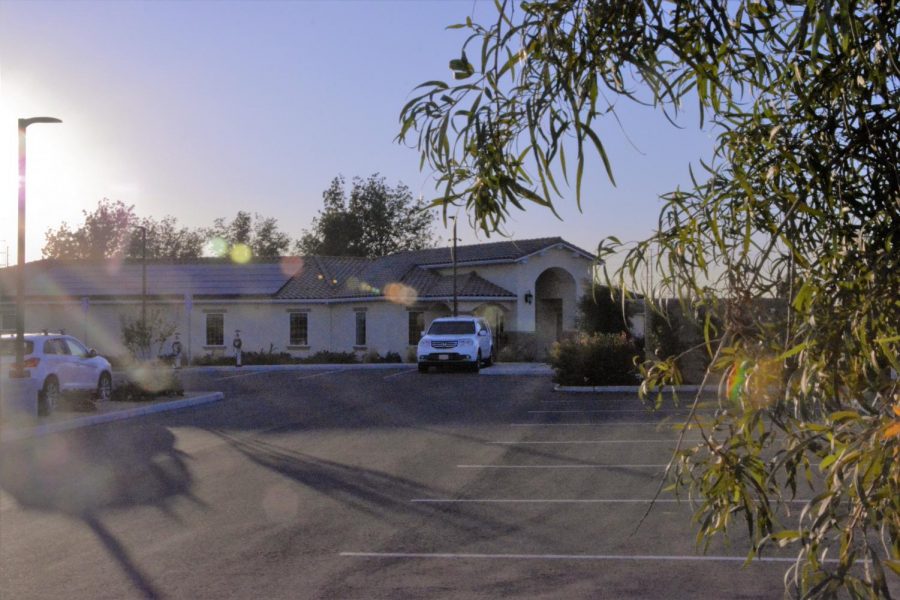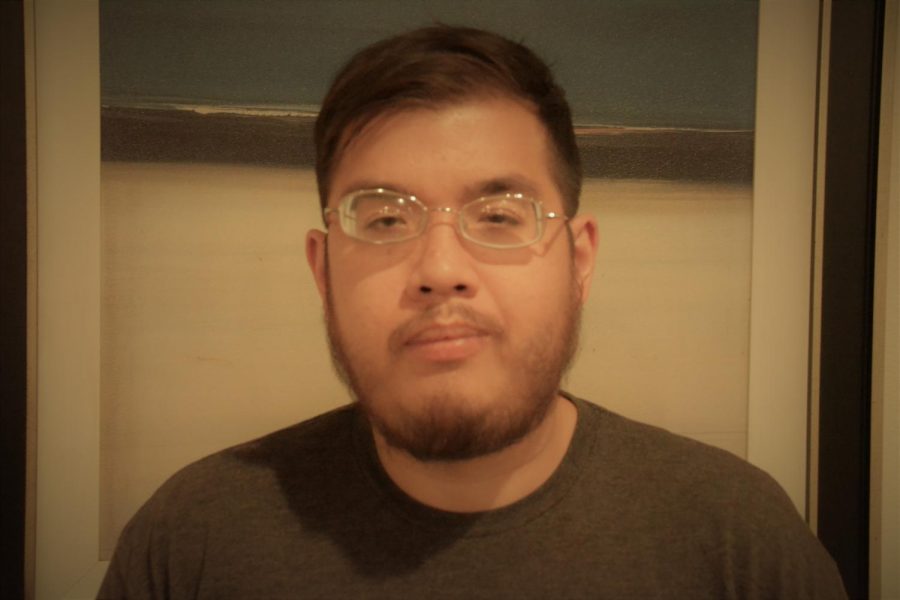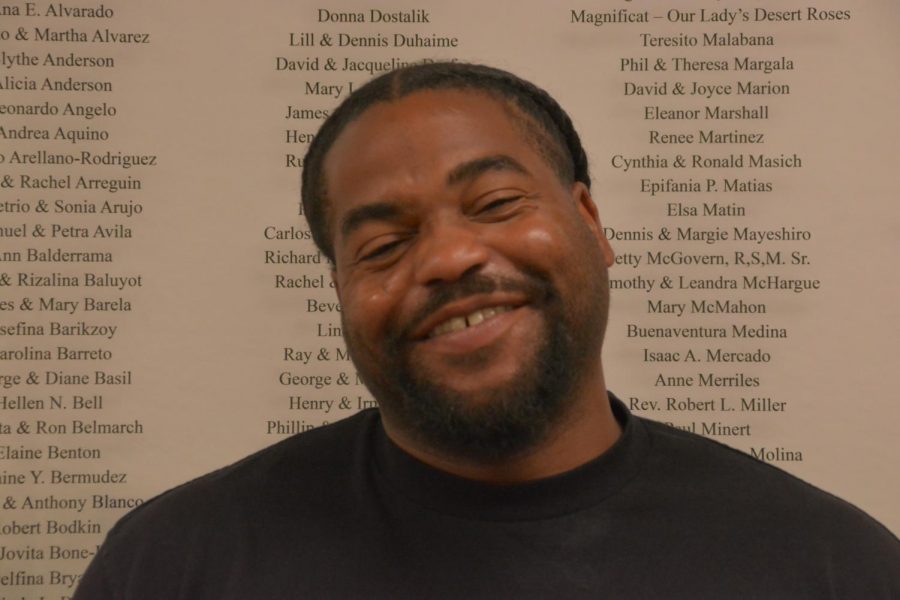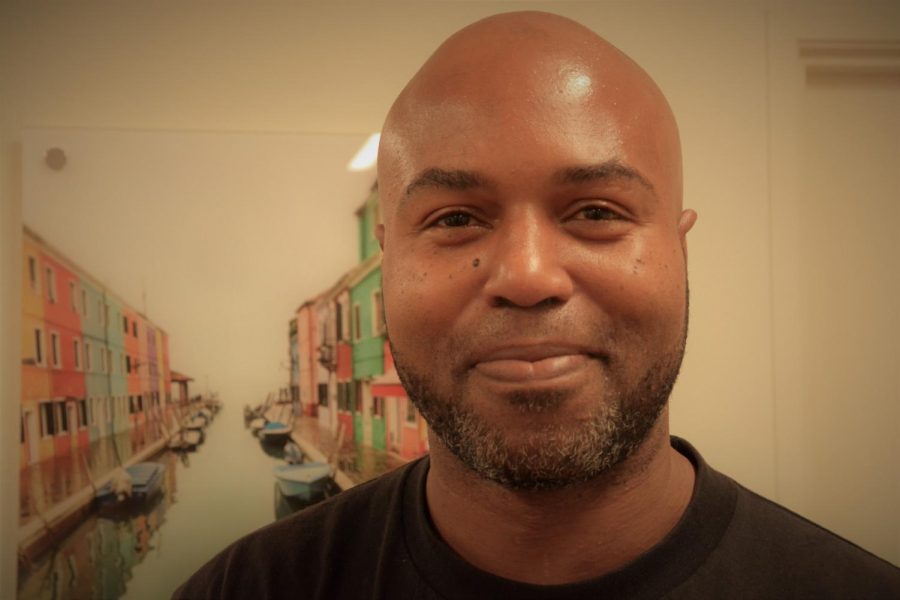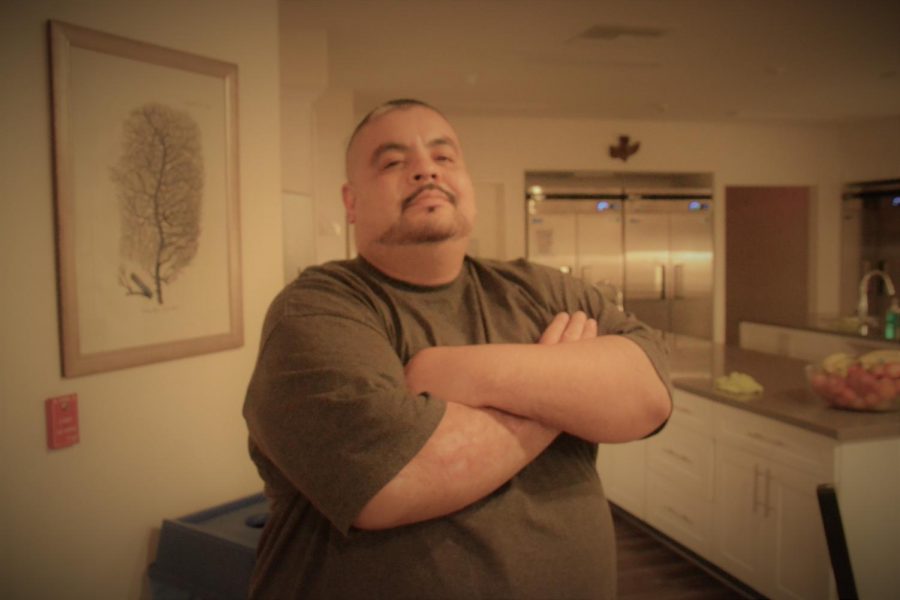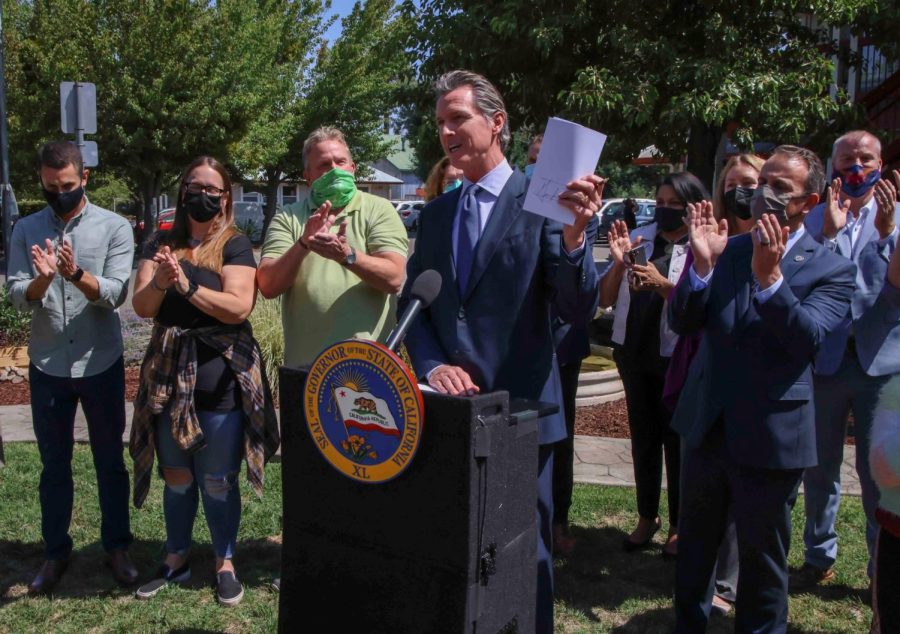Recently, the CHS Publications Department experienced a major theft as over $20,000 in photography equipment was stolen from our studio over Spring Break. This included all cameras. Any amount you donate will help rebuild our program. Thank you!
Mary’s Village is a transitional home for unhoused men in San Bernardino. The men who live here all receive a much needed second chance in life.
Second Chances
December 1, 2021
Over the next five weeks, the Pepper Bough will be telling the stories of four men currently in residence at Mary’s Village, a transitional home for unhoused men in San Bernardino. These stories are at times harrowing, at times sobering, but ultimately inspirational.
These stories stand as a testament to idea that everyone deserves a second chance.
Second Chances—Chapter 1
Mary’s Village
No matter where we come from, no matter the cards we or dealt or the decisions we make, we all deserve a second chance.
For the next four weeks, the Pepper Bough will share the stories of four unique, inspiring men in “Second Chances.” These men, all living in the transitional home for homeless men at Mary’s Village in San Bernardino, come from different backgrounds, different places, and share very different stories, yet have all found a place to call home at Mary’s Village.
Mary’s Village is one part of Mary’s Mercy, a nonprofit organization transitional program, dedicated to offering housing for unhoused men that are either applied or referred into the program. Within the program, these men are housed for two years and are given resources in order to prepare for individual housing outside the home.
Not only is this program dedicated to offering help to these men, but has an even greater dedication to giving these men second chances. Four men who have received their second chances from the help of Mary’s Village are Ryan Costales, Derek Robinson, Quincy Coleman, and Daniel Macias.
These men all have learned different lessons in life and have different stories to tell. Each of them has arrived at Mary’s Village through different paths. But what these men share is the hope to leave Mary’s Village on a different path than the one on which they walked in.
Derek Robinson put it best: “Being here is like a stepping stone to getting my life back.”
The Men of Mary’s Mercy
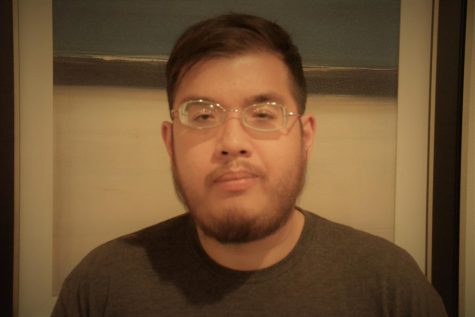
Ryan Costales is 29-years old, and was referred to the program. In his story, we learn more about what it means to make mistakes. To Ryan making mistakes made him a bad person. What it really means is that he, like others, was afraid to reach out for help. The second chance he received was to show that his mistakes don’t define who he is as a person.
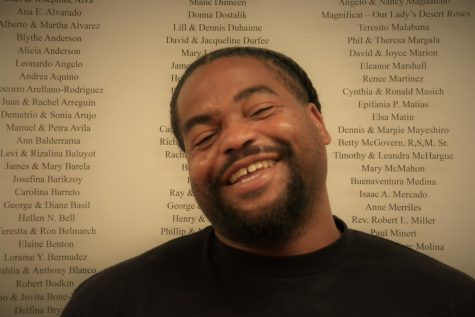
Derek Robinson is 31-years old and was also referred to the program. His second chance at Mary’s Village involved owning up to his mistakes. Being here allowed him to reflect on his actions and gives him the opportunity to learn how to make himself better when he graduates from the program. His story shows us that at the end of the day we have the responsibility to make decisions that influence, but that we also have the responsibility to learn from our mistakes to make better ones in the future.
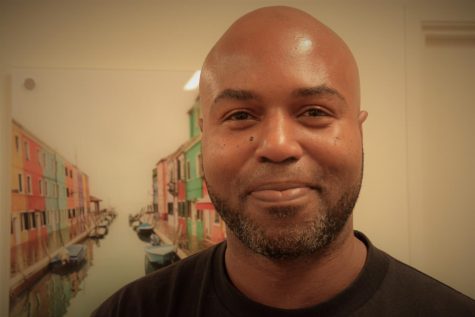
Quincy Coleman is 43-years old and he too received a second chance. Quincy has always considered himself to be very independent. This mentality led to him holding on to some deeply felt negative emotions. His second chance was being able to forgive not only those who have hurt him, but also himself. And by forgiving himself he is learning how to make decisions that allow him to grow as a person.
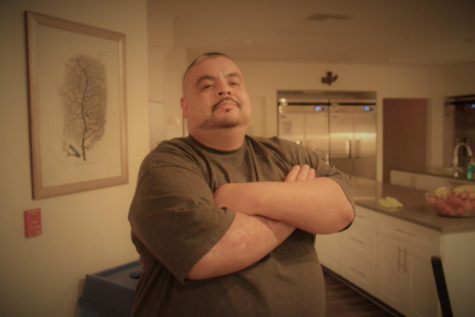
Daniel Macias is 40-years old and at Mary’s Village. He tells his story about how are the young are impressionable and who we surround ourselves with influences who we become. The second chance he received taught him to learn from the mistakes he made so he can share his story and be a role model for others.
Ryan Costales
Second Chances—Chapter 2
Ryan Costales shares his story about how Mary’s Village helped him seek support for his struggles with mental health
Ryan Costales’s story reminds us that the mistakes we make don’t define who we are, or who we will become.
His story begins with his family.
Ryan Costales is a shy, 29-year-old man, shy and observant. Ryan struggles with mental illness. He was diagnosed with bipolar disorder, a condition that causes dramatic mood swings. However, Ryan is not alone in the struggle. His mother and brother also have bipolar disorder, and his father experiences depression.
Growing up, Ryan didn’t like school. He was always the odd man out, alienated because he didn’t fit in with the other kids. This resentment towards school continued into high school, when his bipolar episodes escalated with the sudden death of his mother, due to complications in surgery.
Because of his mother’s death, the silver lining for Ryan was that he grew closer to his siblings and father. He also became motivated to push through into college.
Even though Ryan resented school for most of his life, college is where he slowly began to find himself. It was ¨something I enjoyed, something I was good at.¨ Ryan attended Cal State San Bernardino. While there, he earned his bachelor’s degree in history. He also discovered a passion for teaching.
His life was finally on the right trajectory. He had found his calling. He had found success. He had found connection with family.
Then the pandemic struck.
During this time, he was not on the right medications, was experiencing more stress at work, and the requirement to quarantine made him feel more alone than ever. For Ryan, this skyrocketed his depression and caused his bipolar disorder to worsen. He began to experience paranoia.
Then he started hearing voices.
One day, those voices became too much for Ryan and told him to attack someone with a box cutter.
Because of this attack, he was taken to Arrowhead Regional Medical Center before being transferred to West Valley Detention Center for 6 months. From there, he was referred to Mary´s Village on the account of the mental health diversion on his court order.
On May 24, 2021, Ryan arrived at Mary´s Village.
He knew being charged was a test. His dreams and plans to become a teacher were pushed back, and he began questioning his morality. Not only does Ryan need to complete 2 years at Mary´s Village on the account of his court order, but also feels the need to graduate in order to become a teacher. And he began to question his morality due to the crime he committed due to the voices driving him to his breaking point.
This experience was also a test for Ryan because he has always been more on the reserved side. Being at Mary’s Village meant meeting men coming in and out of the home with whom he began creating friendships. Because of the nature of the facility, some of those relationships were short-lived, while others are still ongoing.
He assures that he “feels welcomed by everyone here.”
He has been able to open up and get along with the men. He even makes jokes and has fun forming bonds—something he never expected of himself.
For Ryan, having to open up with new people and get help is something he initially struggled with. At Mary’s Village, he was able to take anger management classes and be in a curriculum in which he receives help from a psychiatrist and therapist giving him “all the tools” he needs to move forward with his life. The help he has received so far allows him to stay on track in his mental health recovery.
“If I screw up, that’s on me.”
Even though he is required to graduate from the program, Ryan appreciates this fact as he doesn’t have to worry about things on the outside that would have made things harder on his mental recovery, such as work and paying for other living expenses.
He considers Mary’s village the best possible solution that could have happened to him, satisfied by the fact that he is “in a good place.”
Even though he misses out on the freedom of being on the outside, Ryan still keeps a positive mindset. A factor that helps him keep a positive mindset is the fact that he is able to teach. He sometimes helps people earn their GED. This is “rewarding because I’m doing something I want to do, to help someone and see an idea go off in their head.”
Helping men achieve a greater education has given Ryan hope to get a job or even to go back to Cal State San Bernardino to get a teacher’s assistant position once he leaves Mary’s Village. Mary´s Village reignited his passion for teaching and helping out others.
Ryan’s aware there are things to learn from his story. “If there is anything about my story it’s that you need to be aware of mental health problems and you need to ask for help.”
Reaching out and talking more about struggling with mental illness helps it become more socially acceptable. As more people share their stories, it will help others reach out for help and not make mistakes that can potentially destroy lives.
Mary’s Village helped Ryan understand the power he has to take care of his mental health, even during his darkest, hardest days. “At the end of the day, I am a good person. It was just a really bad mistake.”
Derek Robinson
Second Chances—Chapter 3
Derek Robinson tells how his struggles and mistakes led him to redemption at Mary’s Village
Derek Robinson’s story shows us the power and responsibility each one of us has to learn from our mistakes and make better ones in the future.
Like most of us, his troubles begin with himself.
Derek had a pretty normal childhood. He lived with his mother, father, and older brother until his father died when Derek was six.
His mother was great and responsible, working to care for the family. “She showed me the right way,” Derek said, “but I decided to go left.”
When Derek turned 13, that’s when he decided to rebel.
He began running with the wrong crowds. He began smoking weed with friends, thinking it would impress them. At first, that was something he only did recreationally.
Until it became a habit.
At 18, Derek started using ecstasy and meth while continuing to drink and smoke weed.
“It went from cool to falling into a cycle of despertude,” he said.
At 21, Derek was in the wrong place at the wrong time and was shot in a drive-by. From this moment his addiction became even stronger. He began to experience PTSD. On top of that he suffered from anxiety and depression.
This cycle of self-destruction became normal for Derek, and it defined his daily living.
Drinking and using drugs ruined his life. He burned bridges with those around him and ruined friendships left and right. Eventually he found himself homeless.
Still, Derek had hopes and aspirations. “I had so many different goals and things going on in my life and it made me spiral after getting shot because I didn’t know how to cope, I only knew what made me feel good at the time.”
He continued on this path in life until he was charged with assault with a deadly weapon. He was 30. He was seen as fit to enter a rehabilitation program due to him not being under the influence during the charge.
The rehabilitation programs he entered while still incarcerated were Cedar House and Crisis Residential Treatment. Both aimed to help Derek battle with addiction while maintaining his mental help.
Then, on September 22, 2021. Derek Robinson was referred to Mary’s Village.
“It’s truly a blessing because they give us tools to help us get back on track and get back on our feet.”
Being here at Mary’s Village, he has been able to get lots of different types of help.
First, his mental helped improve as his medication became better managed while working in groups that helped take his mind off things. He also received help from the other residents.
“There’s a sense of comradery” he said, formed by an understanding that they make each other stronger. “Iron sharpens iron.”
Even though Derek made several bad decisions, he proudly assures that “I still have high hopes for myself.”
Currently, he is working on getting his degree in Kinesiology and studying to become a sports therapist or physical trainer.
And more importantly, he is learning to “live life on Life’s terms.”
Being homeless at such a young age cost him a structured life, and distorted his idea of what it means to be independent, especially how to be independent without dependency. Derek knows that he has learned a lot from his mistakes and that he still has a lot more to learn.
He wants others to know that the people we are around mold us into who we are. We all have things we wish were different, or that we could change about ourselves or our past. But in order to make our future one we will be proud of, we need to stay active and work for it.
Mary’s Village helped Derek understand that he doesn’t have the power to choose the cards he was dealt in life, but that he has the power to make decisions and actions based on what he was given. He sees this home as “a stepping stone to getting my life back.”
Even on days where Derek feels like he has taken a step back, he reassures himself and others that he “Don’t want to go back to the same things if you haven’t been getting the results you want.”
Quincy Coleman
Second Chances—Chapter 4
Quincy Coleman finds freedom and acceptance to overcome his mistakes and forge a new path for himself at Mary’s Village
Quincy Coleman’s story reminds us that growing as a person not only requires us to forgive those who hurt us but to forgive ourselves.
His story begins with abandonment.
When Quincy was just three-years-old, he was abandoned by his mother. His parents split and he was raised by his grandmother.
Both of his parents were addicts, and at the age of 15, Quincy began to drink and smoke.
This Quincy’s life until, at 17, he was charged with aggravated robbery and possession of marijuana. He caught a sentence of 21 years in a Texas prison.
Only 17, he recalls “being the youngest on the farm” in the prison population. Because he was so young, Quincy was forced to grow up quickly.
He said that “The glass, the steel, and the walls can consume you.” He was left alone with his thoughts as he witnessed other men being broken down in prison.
Even with everything stacked against Quincy, he still decided to become better.
“I was of strong will and mind. I didn’t let it break me.” With that, he decided to study criminology in college on a whim, calling it “one of the best decisions I have made.”
Quincy made his life better while in prison, then at 38, he was released.
He immediately started to assemble a new life. A free man, he developed a love for the open road, and took a job as a truck driver. He drove all over the United States, visiting all kinds of cities and towns.
His addictions were not done with him. He got caught up in the road life and began to attend parties in the cities he visited.
He attended more and more parties. By this time his mother had passed away, so he used parties as an escape, and drinking and using as a way to cope.
His mother’s passing was like being abandoned a second time.
He loved truck driving and traveling, but he “got caught up in that wonder” and it became too much. Eventually he knew he needed help.
He made his way to San Bernardino and on his own walked into the county building, and there he was referred to a sober living home that ended up losing funding. And because of this, he arrived at Mary’s Village on October 5th.
He says that “I knew the direction I wanted to go in my life and I didn’t want it to go to pieces; they took a chance on me.”
At Mary’s Village, Quincy was able to start getting help with his depression and anxiety and cope healthily.
He healed by looking back at what made him angry, understanding his feelings, but not letting himself dwell on them. “Life can be summed up in one word,” he said. “Choice. Because it revolves around all the choices that you make.”
Quincy looked over his life, what he was grateful for, and took accountability for his choices.
It also helped that at Mary’s Village he feels lots of genuine love and acceptance. “We are like a family, everyone has a voice here and there isn’t no one passing judgement.”
He knows he still has a journey ahead of him, but he also knows that he has a second chance here as he continues fighting for his sobriety.
Part of that journey involves continuing with his education. Quincy has always valued education. Growing and learning more has helped Quincy tackle his problems and has helped him learn from his mistakes.
Mary’s Village has given him a chance to get his life together and head in the direction he wants for himself.
Quincy has learned that for him, this direction is through education and building his independence.
And even though independence is something we all should learn, having help on the way is something everyone needs.
For Quincy, the value of education and understanding is that “knowing is half the battle—what you do with what you know decides the outcome of the war.”
It was through his independence that he was able to understand that in order to heal, he needed to not only forgive those who hurt him, but also himself. With an education, he has been able to humble himself every day to live the best possible way only he can.
When he graduates from Mary’s Village, Quincy plans to return to the road. Truck driving was something he always loved to do. For him, it was “the first time I was doing something that I loved—it was like I put on wings and I just flew.”
Truck driving was a way for Quincy to use his independence to view the world and sort out his direction.
And with the help of Mary’s village, he will be able to do what he loves again.
What Quincy wants more than anything, not only for himself, but for the others he has met at Mary’s Village, is to be able to step out into the world and say, “Mission Accomplished.”
Daniel Macias
Second Chances – Chapter 5
Daniel Macias’s story reminds us that mistakes we make in the past don’t define us and that we can learn from them and become role models for others.
Daniel’s story starts with the influences of his environment.
Daniel Macias has always been an outgoing person. At a young age, he began hanging out with his friend’s brothers.
His friend’s brothers were a part of a gang and there he was introduced to drugs at the age of 13 and began using to fit in.
His habit soon became an addiction and he began to hear voices.
Daniel has always been close to his mother, saying that “she has been my rock,” and so he began to tell her of the voices and paranoia he experienced.
Even with the voices and his habits, he found it important to still be productive and work getting on and off jobs in warehouses since the age of 18 claiming that “it wasn’t my thing to be a part of the streets.”
He worked off and on until the age of 37 and this is when his addiction became worse and also his paranoia.
The voices he was experiencing led to him breaking the window to his neighbor’s house and getting arrested and time in jail for 3 months.
When he was released, his mother sold their house and he had to find someplace else to stay.
He did well on his own for a couple of months paying rent in a new home but the voices came back once he began using once he was released.
The voices led to more paranoia and instead of making the same mistake twice decided to make the decision to become homeless. For Daniel, he claims that he was “fighting the voices.”
He became homeless and began sleeping in his car.
Because he had already been arrested before and had been getting into trouble with the laws and drugs it made it hard for him to stay away from the police.
That’s when he made the decision to leave California and flee to Arizona to get away from the police and trouble here.
He ended up finding his way to Arenburg Arizona, even though alone he remembered being happy for the first time in a long time “I was happy because I was away from drugs.”
But for Daniel this didn’t last long and he found himself back into his old habits when he began meeting with the local homeless people near him and started using meth.
He also found himself in more trouble than when he was back home.
Here, he began getting noticed by the some desert squatters. “These people were bad people, they were living off the grid.”
He was getting noticed because he started noticing the things they were doing. Seeing how they were abusive to women and also the items they stole. “I knew they were up to something i began finding piles of kid shoes, backpacks, toys and I knew it didn’t belong to them.”
The squatters ended up finding out about Daniel finding out more and threatened his life with threats to even “put him in a hole.”
Daniel ignored their threats and continued noticing more of their activities. And one night he noticed the squatters dressing up as women as covers to steal and harm women.
He couldn’t ignore what he was seeing and even with having previously received threats he recognized that one of the men dressed up was the same one that had threatened him.
Daniel trusted the voice in his head that told him to confront the man and when he did he began to get attacked by the man and had to fight back for self defense. During this fight he was able to escape only after gauging one of the man’s eyes and driving off in his car.
He escaped and drove to the nearest police station which was forty miles away and told them everything that happened that night and what he had known about the men before. “I basically turned myself in.”
With Daniel telling the sheriff about the situation, he was ending up in the process of almost facing 18 years of attempted murder.
But because the public defender believed his story because they already had evidence about the squatters he was able to be let out free. But Daniel wasn´t free from the outside from the squatters.
Just the day after he was announced set free he gets jumped by four men and gets pressed against the hot pavement in Arizona and he ends up with 1st and 2nd degree burns all over his body.
The men that had jumped him noticed the burns and they end up calling an ambulance for him and he was left to heal in the hospital for three months.
In the hospital he was able to get contact with his mother and return back to Riverside, California.
Daniel knew his life needed to head in the right direction and enrolled himself in Mary’s Village.
At Mary’s Village Daniel is able to follow the rules now and focus on his life without the influence of drugs. “I told myself this was my home and that I was going to make it work.”
Also now because he is getting help here at Mary´s Village he has the opportunity to leave for work and the hope of returning to school to get a bachelors in drug and alcohol counseling or possibly even work back at the home as a volunteer. ¨It’s my way of giving back¨.
For Daniel, he’s lived most of his life with the presence and influence of drugs. But has kept a hard working mentality and has never stepped away from the opportunity to do the right thing.
His path in life taught him that even though he had made mistakes he was still a good person at heart that had the potential to be a leader and impact the lives of others.
Being here at Mary’s Village helps Daniel get his life back on track and do the right thing being a leader for his fellow peers here at the home saying that “I get a kick out of doing the right thing.”
Courtesy Office of CA Governor
Governor Gavin Newsom (D-CA) recently signed a $12 billion dollar housing and homelessness package. What can we do to make sure we hear more stories like those of the men from Mary’s Village?
Second Chances—Chapter 6
The stories of Mary’s Village highlight a larger picture of the challenges facing the homeless and how we can help
Over the last four chapters of Second Chances, the Pepper Bough has told stories of four men who have all had different life experiences followed by choices and decisions that brought them to Mary’s Village.
Ryan Costales, Derek Robinson, Quincy Coleman, and Daniel Macias’s stories all serve as a reminder that no matter where we come from we all have the power and the opportunity to give ourselves and others a second chance.
Mary’s Village offered each of these men their second chance to battle something, or put themselves in a better position than the one in which they arrived.
While their stories are both heartbreaking and heartwarming, theirs are merely the tip of the iceberg. There are countless more men just like them across our city, our county, and our state.
Earlier this month, Governor Gavin Newsom introduced a plan to tackle the threat of homeless in California.
He claims last year “California has been able to move 58,000 individuals off our streets and into housing.” This plan was designed to continue and create a long-term change towards getting more homeless individuals into homes.
“We have to do more and we have to do better,” Newsom said.
California has been doing more to help the unhoused community. As of 2020, it has one of the highest ratios of homelessness to state population in the United States with over 161,500 residents reporting homeless.
These statistics don’t even consider the amount of residents living in poverty, or on the verge of becoming homeless.
The simple fact is that we are not doing enough.
And as individuals we cannot leave it just to packages passed by policy makers. The responsibility for our communities is in our hands..
It is a community’s responsibility, and privilege to give back, in small or large ways.
You may not have the time or money to help your community, but giving back can be seen in more ways than one.
Mary’s Mercy Center was able to see the state of homelessness in San Bernardino and create a transitional program like Mary’s Village.
Mary’s Village gives back to the community by offering a multitude of resources and help.
But it is also just as simple as offering these men a bed to sleep on that took them off the streets and put them in an environment where they can better themselves and improve their situations.
Overall programs like Mary’s Village have the power to change the direction of people’s lives. We have the power, too. To get involved. To care. To advocate for the unhoused.
Recently with the current Omicron spike of the pandemic, the government and media have been more focused on homelessness. Although this issue is one that may seem impossible, we are getting closer and closer towards, as San Diego Mayor Todd Gloria put it, “ending this nightmare.”
